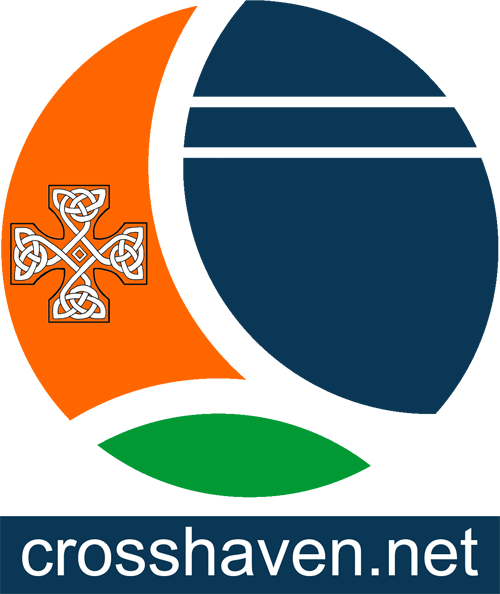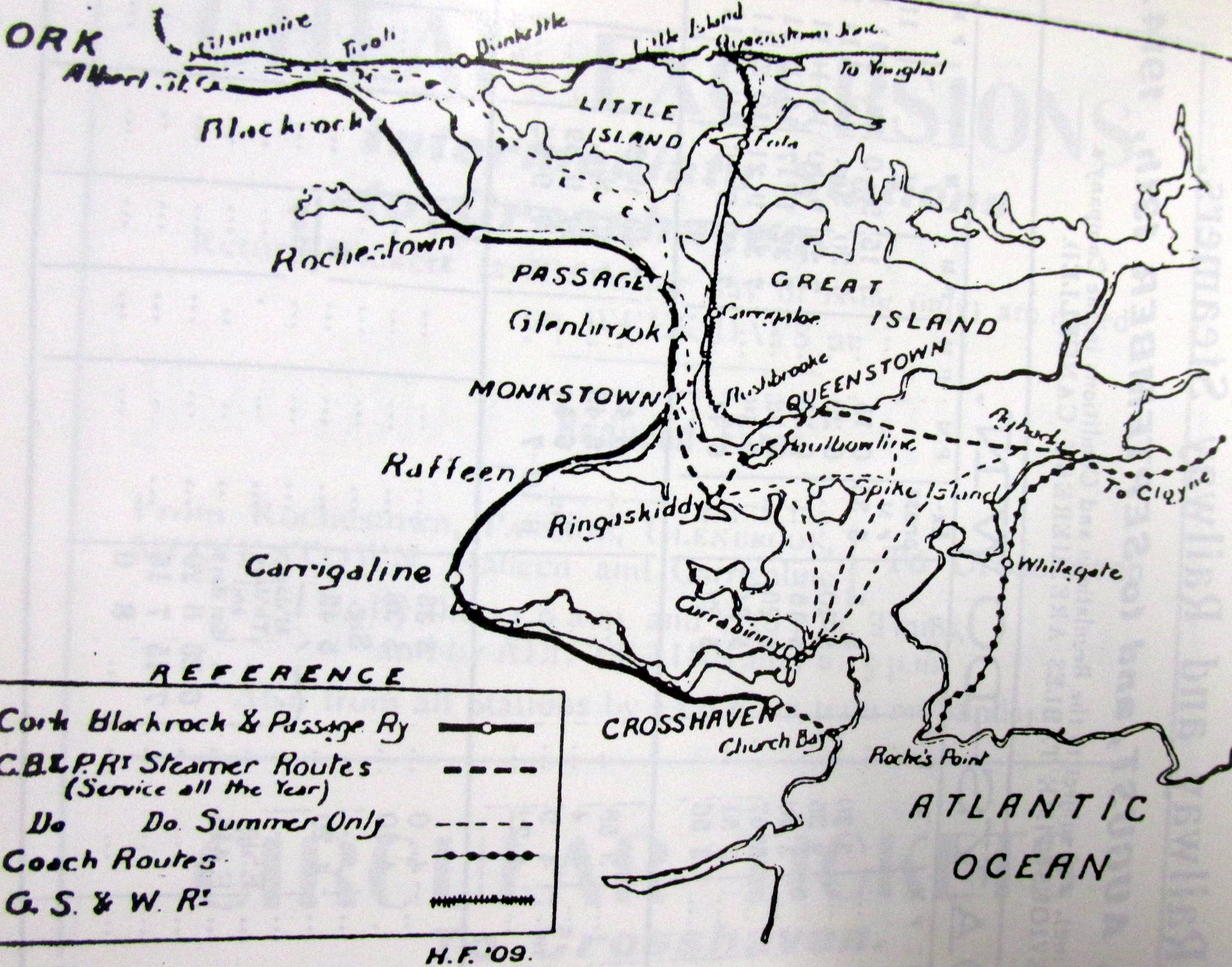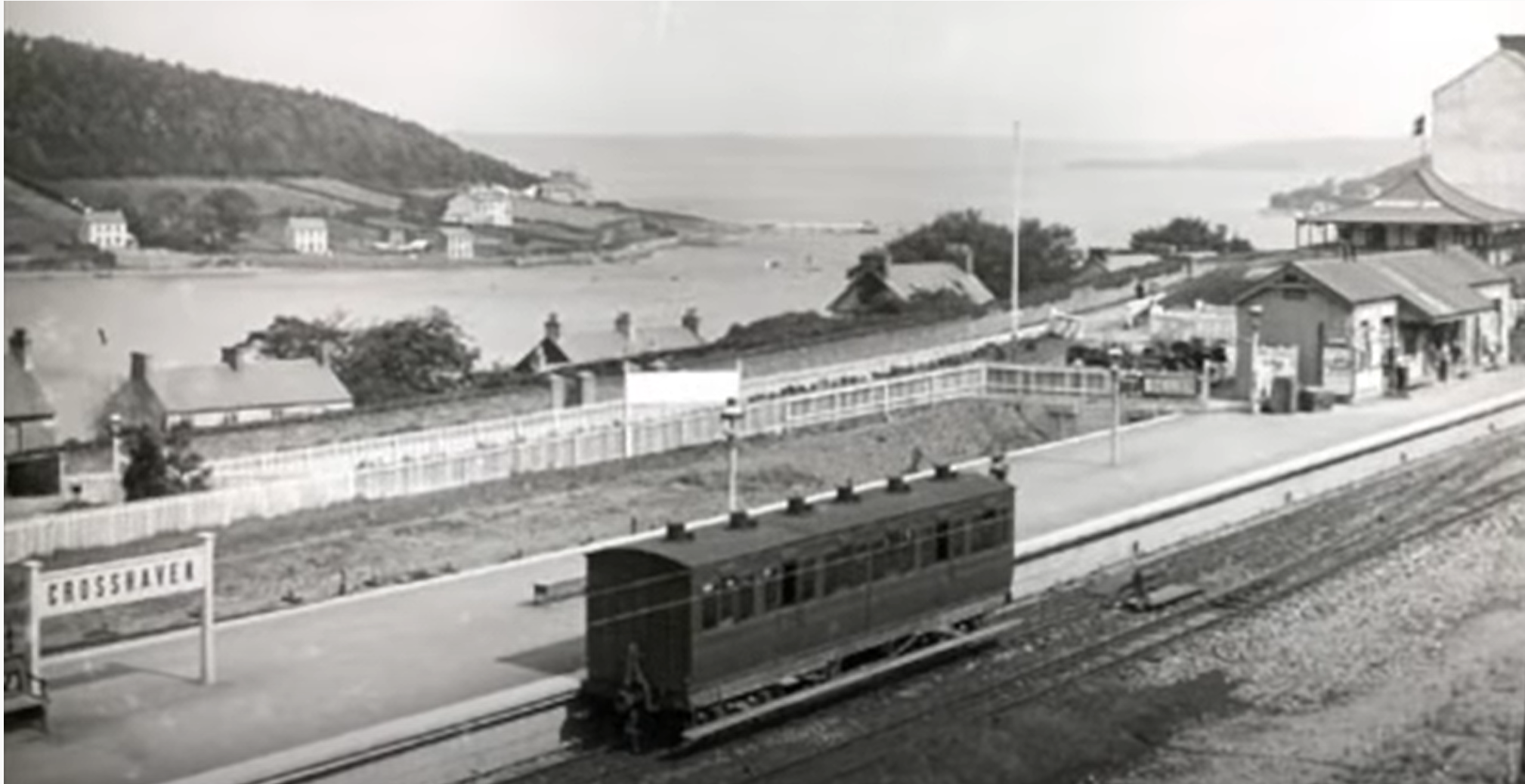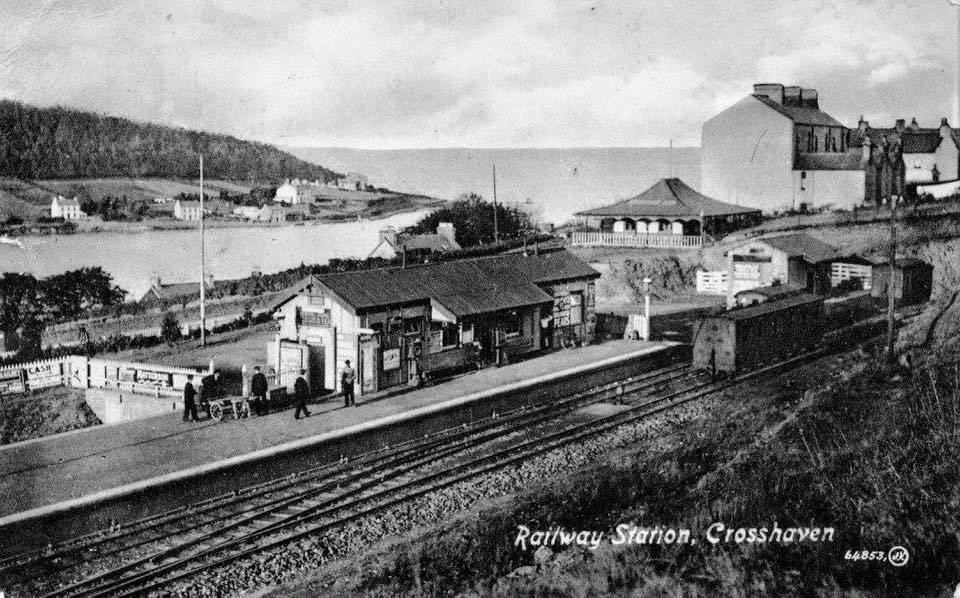
CORK TO CROSSHAVEN RAILWAY
Opened 18 June 1850
Closed 31 May 1932
OVERVIEW
The railway line originally opened in 1850 as a 1600mm☀ Irish standard gauge railway between Cork and Passage West, operating steam feeder ferries to other locations around Cork Harbour. From here travellers to Crosshaven had to take the company's steamer via Glenbrook, Monkstown and Cobh (Queenstown). (☀Note: 1600mm Irish standard railway gauge is still used throughout Ireland)
The railway was converted to 3ft / 914mm narrow gauge in 1900 and extended reaching Monkstown in 1902, Carrigaline in 1903 and Crosshaven with the formal opening of the line on the 30th of May 1904 by the British Lord Lieutenant of Ireland, the country being occupied by the British at that time.
The line was heavily dependent on summer tourist traffic and suffered significant damage during the War of Independence and later during the Irish Civil War. The railway was eventually incorporated into the Great Southern Railway Company (later part of CIE) in 1924. After 28 years of operating the line closed on Tuesday the 31st of May 1932.
The railway route ran from Cork City to Blackrock, then through cuttings and embankments to Rochestown and along a scenic riverside embankment to Crosshaven. The stations along the route included Cork Albert Street, Blackrock, Rochestown, Passage, Glenbrook, Monkstown, Rafeen, Carrigaline, and Crosshaven. Today, most of the route has been converted into a GreenWay, a public pathway and nature area.

The primary purpose of the Cork to Crosshaven railway line was to facilitate passenger travel, particularly during the summer months when Crosshaven saw an influx of visitors. The trains offered a convenient and affordable means of transportation for day-trippers, holidaymakers, and locals alike. The journey provided scenic views of the River Lee and Cork Harbour, adding to the appeal of the trip.
In addition to passenger services, the railway also played a role in transporting freight. Local industries, businesses, and farms relied on the railway to transport goods such as agricultural produce, coal, and building materials. The railway's freight services helped sustain the local economy and provided essential connections to markets in Cork City and beyond.
Decline and Closure:
Despite its initial success, the Cork to Crosshaven railway line faced challenges in the early years of the 20th century. The rise of private automobiles and buses as preferred modes of transportation, coupled with changing travel patterns, led to a decline in passenger numbers. The costs of maintaining the railway infrastructure became increasingly unsustainable. On Tuesday the 31st of May 1932 the last passenger service ran on the line, marking the end of an era for leisure travel between Cork City and Crosshaven. Although freight services continued for some years, the line eventually succumbed to economic pressures, and it was officially closed on Monday the 12th of April 1948.







More info to follow
Published June 2024 / Foilsithe Meitheamh 2024
All Rights Reserved
 Ext.Sites⇉
Ext.Sites⇉